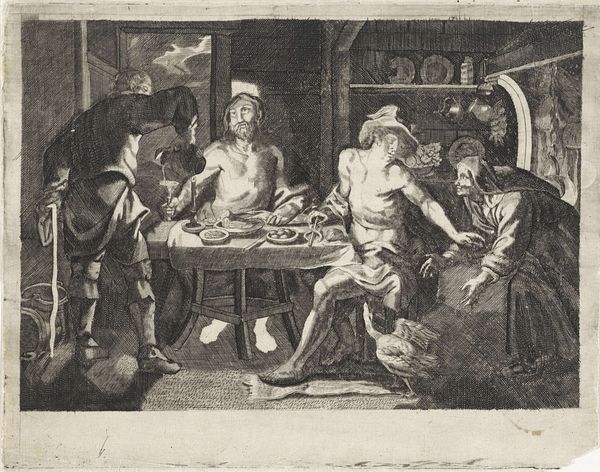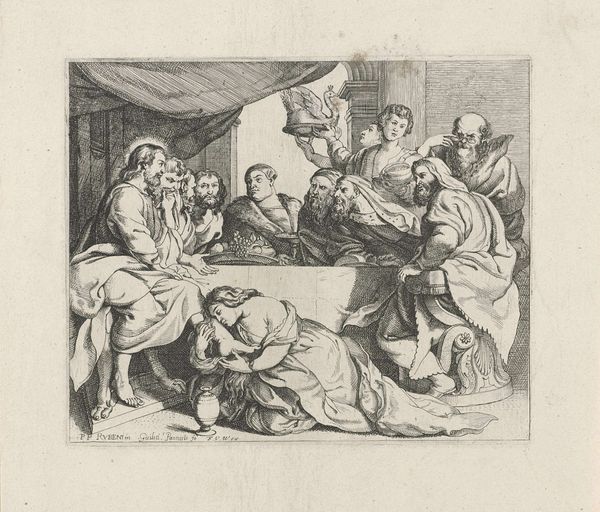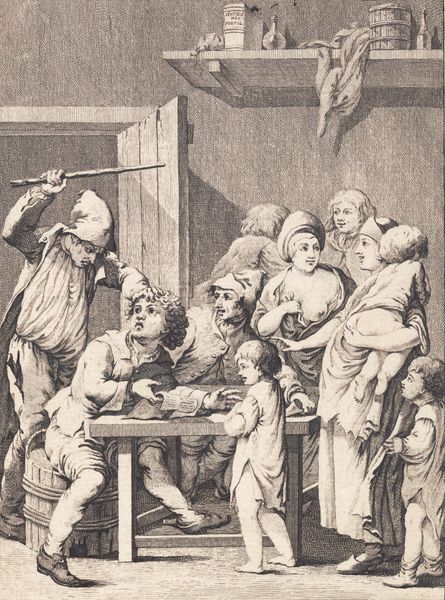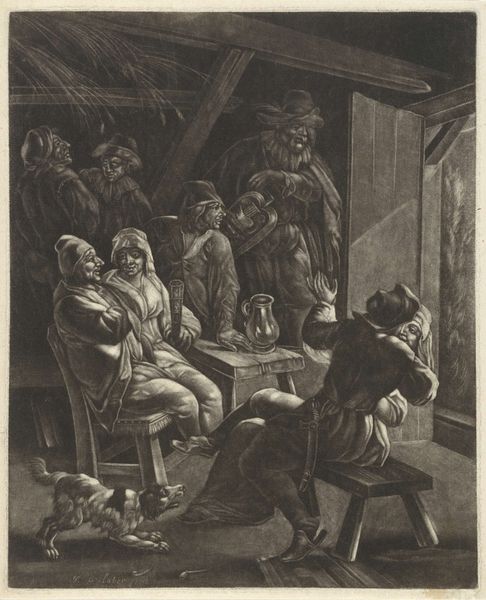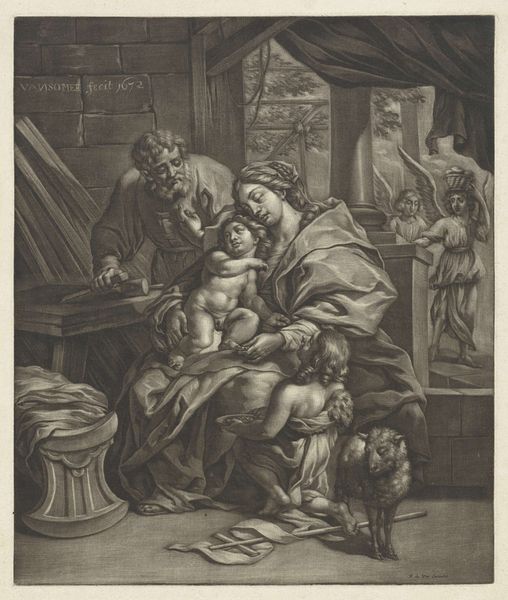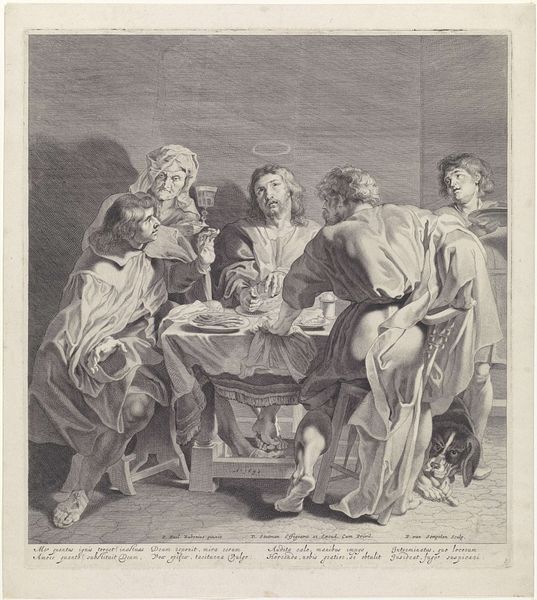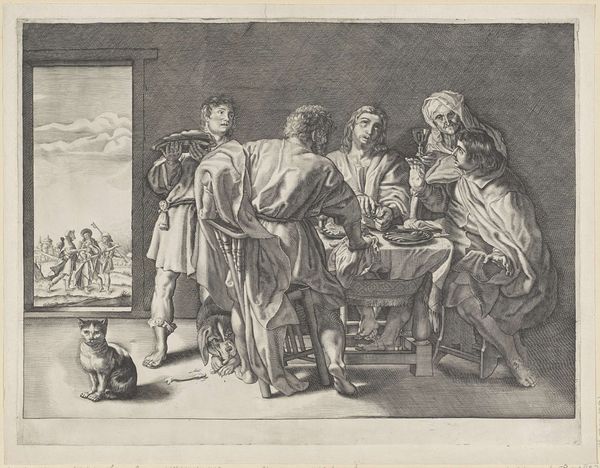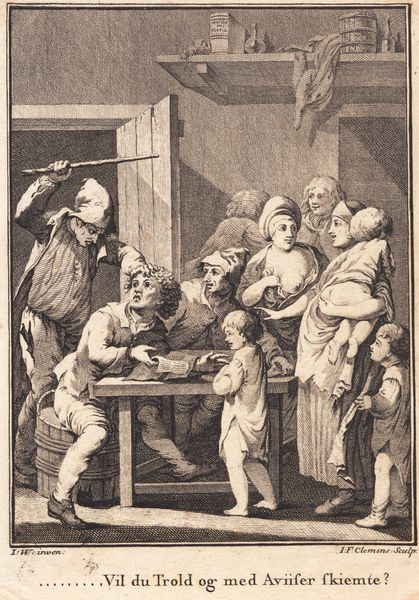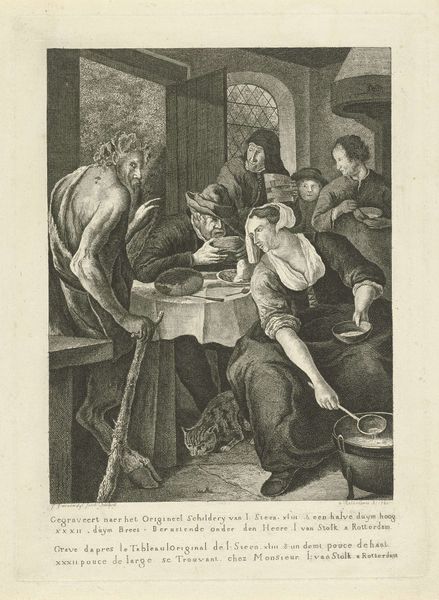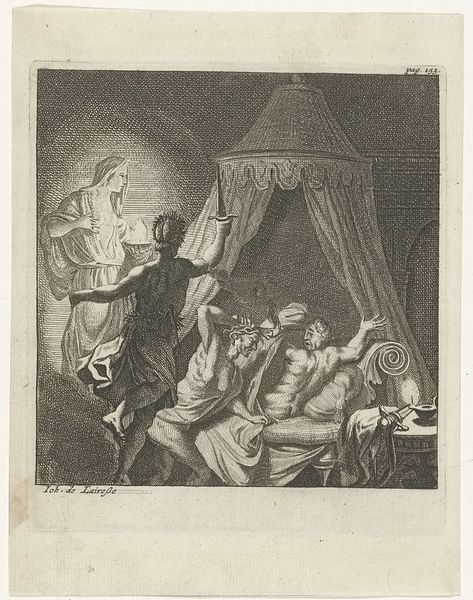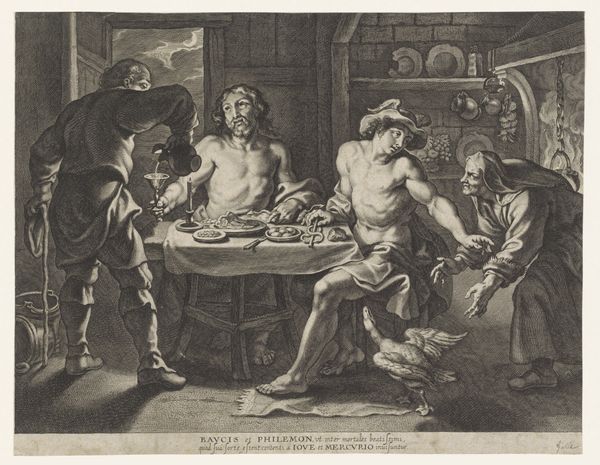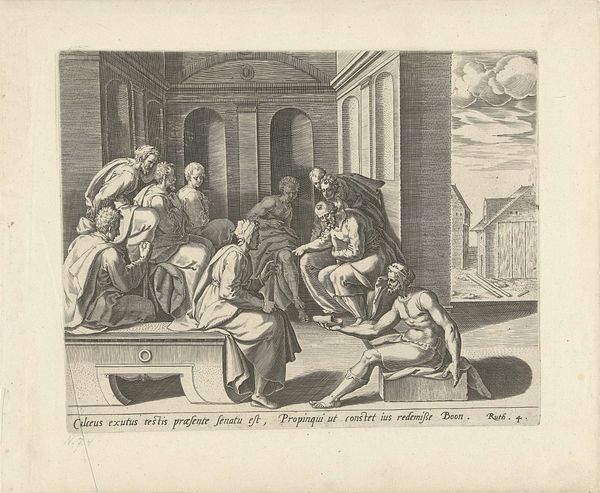
engraving
#
narrative-art
#
baroque
#
caricature
#
old engraving style
#
caricature
#
figuration
#
personal sketchbook
#
portrait drawing
#
genre-painting
#
engraving
Dimensions: height 415 mm, width 405 mm
Copyright: Rijks Museum: Open Domain
Curator: Immediately striking! The grimy realism somehow enhances the mythological aspect of it all. Editor: Indeed. What you're looking at is an engraving titled "Satyr and the Peasant Family," dating back to the period 1619-1675. The piece is currently held in the Rijksmuseum collection and attributed to Lucas Vorsterman I. Curator: It's compelling how Vorsterman leverages engraving to depict not only form but also texture—look at the Satyr’s goat legs and torso versus the smooth, almost porcelain quality of the family's skin. Editor: This print exemplifies how early modern printmaking disseminated visual narratives throughout society. Consider the labor involved in producing such detailed engravings and how its relative affordability expanded access to imagery and ideas. This is far from painting a luxury item for the wealthy elite. Curator: It also begs questions of accessibility and readership. There’s text included in the print... So who exactly was consuming these images and for what purposes? Were the images driving distribution, or the text, or the status of the workshop it came from? Editor: A critical point. Vorsterman worked within the influential orbit of Rubens' studio, so it is likely that this print's commercial viability was heavily tied to that artistic lineage. He exploited an already-burgeoning industry in Antwerp to market this style across Europe. Curator: Right, but by depicting this crude and intimate scene with the tools of mass production, Vorsterman challenges what exactly constitutes “high” and “low” art. Does reproduction inherently cheapen an artistic message? Or can the materiality serve the story itself? Editor: These questions invite continuous debate. The distribution of this image contributed to broader cultural and moral discourses, allowing these characters to resonate within an emerging consumer culture, and thus shape perceptions beyond a single viewing or owner. Curator: Exactly, so in a strange twist, by breaking it apart and recreating it with the sweat of his brow and simple tools, the image lives on and spreads an idea more fully! Editor: A potent reminder of the complex interplay between artistic production, cultural transmission, and historical context in the world of art.
Comments
No comments
Be the first to comment and join the conversation on the ultimate creative platform.
